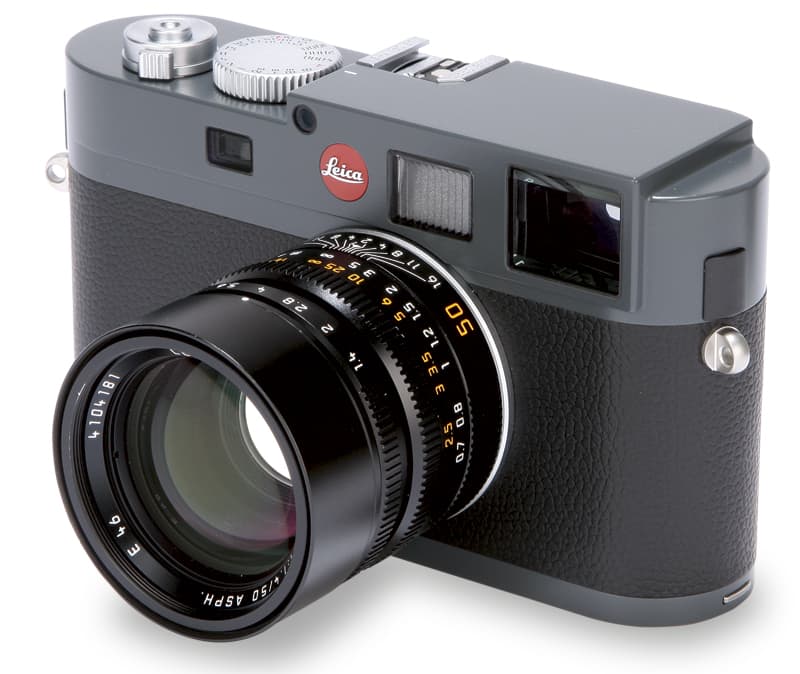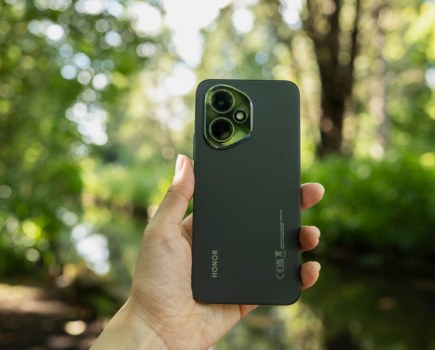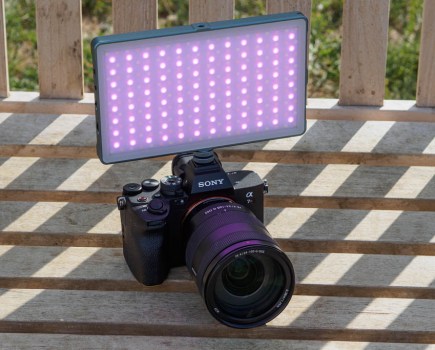Leica M-E at a glance:
- 18-million-pixel, full-frame CCD sensor
- DNG raw files
- 2.5in, 690,000-dot LCD screen
- ISO 80-2500
- 2fps frame rate
- Street price around £3,900
Leica M-E review – Introduction
When it was launched in 2009, the Leica M9 was an advanced camera. Its 18-million-pixel, full-frame CCD sensor was, at the time, bettered only by a handful of professional DSLR or medium-format models. Aided by its lack of an anti-aliasing filter, the Leica M9 produces sharp images that even now, several years on, can hold their own against all but the latest cameras.
However, certain features of the M9 are now dated. Leica responded with the launch of the Leica M, a 24-million-pixel, full-frame model with a new LCD screen and optional EVF. All these changes are the result of switching from CCD to CMOS sensor technology in the new camera.
At the same time, Leica introduced the M-E. At around £600 cheaper than the M9, the £3,900 Leica M-E sits at the bottom of Leica’s range of M-series rangefinder cameras, below the M, M9 and M9-P, although much of its technology is virtually identical to the latter two cameras.
Features
The truth is that there is very little difference between the M-E and the M9. In fact, all the key features are unashamedly one and the same: the sensor is the same KAF-18500 18-million-pixel, full-frame CCD unit with ISO 80-2500 sensitivity; images can be saved as JPEG files or as the almost universally accepted DNG raw files; and the shutter speed ranges from 1/4000sec to 240secs (in bulb), with a burst rate of 2fps.
There are, in fact, just three differences between the new M-E and the M9. The first is that the new camera has no USB port. This may seem like an odd decision, but I don’t know any photographers who actually use a USB port to transfer their images as most will simply remove the memory card and use a card reader. This has obviously been considered by Leica, because the new top-of the-range Leica M also lacks a USB port. Its absence on the lower model isn’t necessarily a cost-cutting exercise.
The second, and most significant, change is the removal from the M-E of the rangefinder guideline selector switch. On the M9 it is used to select which guidelines are displayed in the rangefinder when different lenses are used. Most modern lenses have a small code that is read optically (not digitally) by modern Leica cameras to automatically change the rangefinder guidelines; on digital cameras this also applies lens data and basic lens corrections to images. Older lenses that have not had this code added will no longer have the guidelines changed automatically in-camera and, as there is no switch, this may be a problem for those with older Leica optics.
This feature has also been removed from the Leica M, although it is less of an issue on this camera because its CMOS sensor means the M has live view and the option for an EVF. This is clearly where Leica is distinguishing the M-E from the M9 and M. Those with older lenses are far better suited to the more premium cameras.
Build and performance

These images show 72ppi (100% on a computer screen) sections of images of a resolution chart, captured with the Leica Summilux-M 50mm f/1.4 Asph lens set to its 100mm point. We show the section of the resolution chart where the camera starts to fail to reproduce the lines separately. The higher the number visible in these images, the better the camera’s detail resolution is at the specified sensitivity setting.
Like the M-9, the body of the M-E is magnesium alloy with a brass top-plate. The only difference is the colour change from the steel-grey or black painted finish of the M9 to an anthracite grey paint finish on the M-E. Other than this, plus the USB port and guideline selector switch, the build and handling of each camera is identical, as are the features and image quality.
Having the image quality of the M9 is no bad thing because there is very little noise at low ISO sensitivities and images are very sharp due to the lack of an anti-aliasing filter. In fact, they look far more detailed than you would expect from an 18-million-pixel sensor.
That said, the specification of the Leica M9 is now looking somewhat dated, and as the M-E has inherited these features, it too is lagging a little behind the times – you only need to look at the difference in specification between the M and the M-E to see this. Perhaps the least impressive part of the M-E’s specification is the 2.5in, 230,000-pixel (690,000-dot) LCD screen. This is comparatively small and lacking in detail compared to almost all screens currently found on DSLRs and compact system cameras. The new Leica M, by comparison, features a respectable 3in, 920,000-dot display.
There are a few further differences between the M-E and M9-P. The latter doesn’t feature Leica’s red-dot logo, instead having ‘Leica’ engraved on the top-plate. It also has scratch-resistant sapphire covering the LCD screen, whereas the M-E uses toughened glass.
Overall, then, the M-E is virtually identical to the M9. In some respects both cameras fall a little behind the times, but as far as images are concerned, the tried-and-tested 18-million-pixel CCD sensor of the Leica M-E can’t be faulted. There are some who may even favour it ahead of the CMOS sensor of the new Leica M.

Image: As shown in the resolution test images, there is slightly more detail in raw files
Our verdict
With only a few slight differences between the Leica M9 (and M9-P) and the new M-E, the £600 gulf in price between the cameras does make the M-E seem like more of a bargain. For those with newer lenses, the features lacking in the M-E certainly won’t be missed. However, despite the high quality of the build and the images it produces, the camera is left wanting in some areas, notably its LCD screen – £3,900 is still a lot of money for a camera with only a 2.5in display.
If money isn’t a concern, the Leica M looks the better option, as it should be for the extra £1,200 that it costs, and we look forward to testing one when it becomes available. However, for those who really want to own a digital Leica rangefinder camera, the M-E is the most affordable option yet, even if the specification is already looking a little dated.








